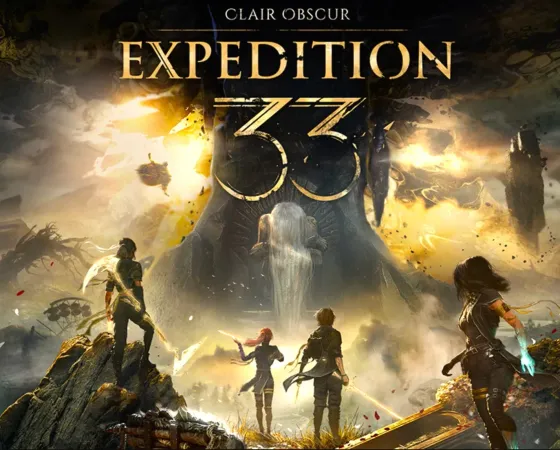Cinq Européens dont Thierry Breton interdits d’entrée aux États-Unis
Free speech, mais pas pour tout le monde

Dans un contexte d’attaques régulières contre les réglementations européennes, les États-Unis ont interdit de visa cinq Européens travaillant sur les questions de modération et de régulation des discours de haine et de la désinformation, dont l’ancien commissaire européen Thierry Breton.
Le ministère des Affaires étrangères (State Department) des États-Unis a interdit à cinq Européens d’entrer sur son territoire, les accusant d’avoir obligé les entreprises de la tech à censurer ou invisibiliser les points de vue de la population américaine.
Le secrétaire d’État Marco Rubio a décrit les cinq personnes visées par l’interdiction de visa en « activistes radicaux et ONG arsenalisées pour pousser la censure et sévir sur les États étrangers – en l’occurrence en visant des personnalités et des entreprises américaines ».
Un ancien commissaire européen et quatre membres de la société civile
Ancien commissaire européen au Marché intérieur, très actif sur les travaux relatifs au règlement européen sur les services numériques, Thierry Breton est concerné, aux côtés du Britannique Imran Ahmed, directeur exécutif du Center for Countering Digital Hate (CCDH), de Josephine Ballon et Anna-Lena von Hodenberg, directrices de l’ONG allemande de défense des droits numériques HateAid, et de la directrice du Global Disinformation Index (GDI) Clare Melford. Washington précise qu’aucun d’entre elles et eux n’exerce actuellement de fonctions officielles au sein des gouvernements britanniques ou européens.
Sur X, le ministre des Affaires étrangères français Jean-Noël Barrot a dénoncé « avec la plus grande fermeté » les restrictions annoncées. « Le règlement sur les services numériques (DSA) a été démocratiquement adopté en Europe pour que ce qui est illégal hors ligne le soit aussi en ligne. Il n’a absolument aucune portée extraterritoriale et ne concerne en aucun cas les États-Unis. Les peuples de l’Europe sont libres et souverains et ne sauraient se faire imposer par d’autres les règles s’appliquant à leur espace numérique. »
Ministre chargé de l’Europe, Benjamin Haddad a de son côté signifié son « soutien » aux cinq personnes sanctionnées. « Un vent de maccarthysme souffle-t-il à nouveau ? », s’interroge Thierry Breton, qui rappelle que « 90 % du Parlement européen — démocratiquement élu — et les 27 États membres à l’unanimité ont voté le DSA », et conclut : « À nos amis américains : « La censure n’est pas là où vous le pensez ». »
Attaques rangées contre les régulations européennes…
Depuis le début de l’année 2025, les entreprises américaines de la tech ont obtenu un soutien inégalé du pouvoir en place, en particulier sur les questions de soutien au développement de l’intelligence artificielle, des cryptoactifs, et la lutte contre les régulations étrangères, voire des États locaux. Depuis plusieurs mois, les équipes de Trump obligent ainsi les diplomates américains à construire une opposition frontale au DSA, dont l’un des objets est de minimiser la violence et la désinformation en ligne.
L’amende de 120 millions d’euros infligée à X, début décembre, a notamment été décrite par Marco Rubio comme une « attaque contre les plateformes technologiques américaines et le peuple américain par des gouvernements étrangers ». Elle résultait d’une procédure formelle ouverte deux ans plus tôt pour suspicions de violations du DSA.
… et contre toute forme de modération en ligne
Outre ces prises de parole très visibles, entamées dès le discours de J.D. Vance à Munich, en février, dans lequel le vice-président critiquait un « recul » de la liberté d’expression en Europe pour mieux soutenir le parti d’extrême-droite Alternative für Deutschland, les États-Unis travaillent par ailleurs officiellement à réduire l’accès aux visas H-1B (qui permettent de travailler sur le territoire) de toute personne travaillant sur les questions de modération.
En pratique, le mémo révélé par Reuters intime aux fonctionnaires de l’administration de vérifier les profils LinkedIn des potentiels candidats, pour mieux empêcher l’entrée sur le territoire à toute personne qui serait « responsable ou complice de censure ou de tentative de censure de l’expression aux États-Unis ». Si tous les secteurs sont théoriquement concernés, le document pousse à vérifier plus spécifiquement les activités des personnes issues des industries de la tech ou des réseaux sociaux.
 La licence Monster Hunter cartonne, c'est une source de brouzoufs importante pour Capcom. Alors que le RE Engine est d'ordinaire docile tout en étant visuellement réussi, le dernier opus de la saga, Alias Monster Hunter Wilds, est arrivé tout cabossé. Les textures étaient affreuses, tout juste accep...
La licence Monster Hunter cartonne, c'est une source de brouzoufs importante pour Capcom. Alors que le RE Engine est d'ordinaire docile tout en étant visuellement réussi, le dernier opus de la saga, Alias Monster Hunter Wilds, est arrivé tout cabossé. Les textures étaient affreuses, tout juste accep...




 Le jeudi 18 décembre 2025 avait lieu la cérémonie des Indie Game Awards 2025, organisée par Six One Indie. 18 récompenses ont alors été décernées, que voici en détail en incluant les nominés afin que vous puissiez avoir une vue d'ensemble. Les vainqueurs sont chaque fois mis en gras :GAME OF THE YEA...
Le jeudi 18 décembre 2025 avait lieu la cérémonie des Indie Game Awards 2025, organisée par Six One Indie. 18 récompenses ont alors été décernées, que voici en détail en incluant les nominés afin que vous puissiez avoir une vue d'ensemble. Les vainqueurs sont chaque fois mis en gras :GAME OF THE YEA...